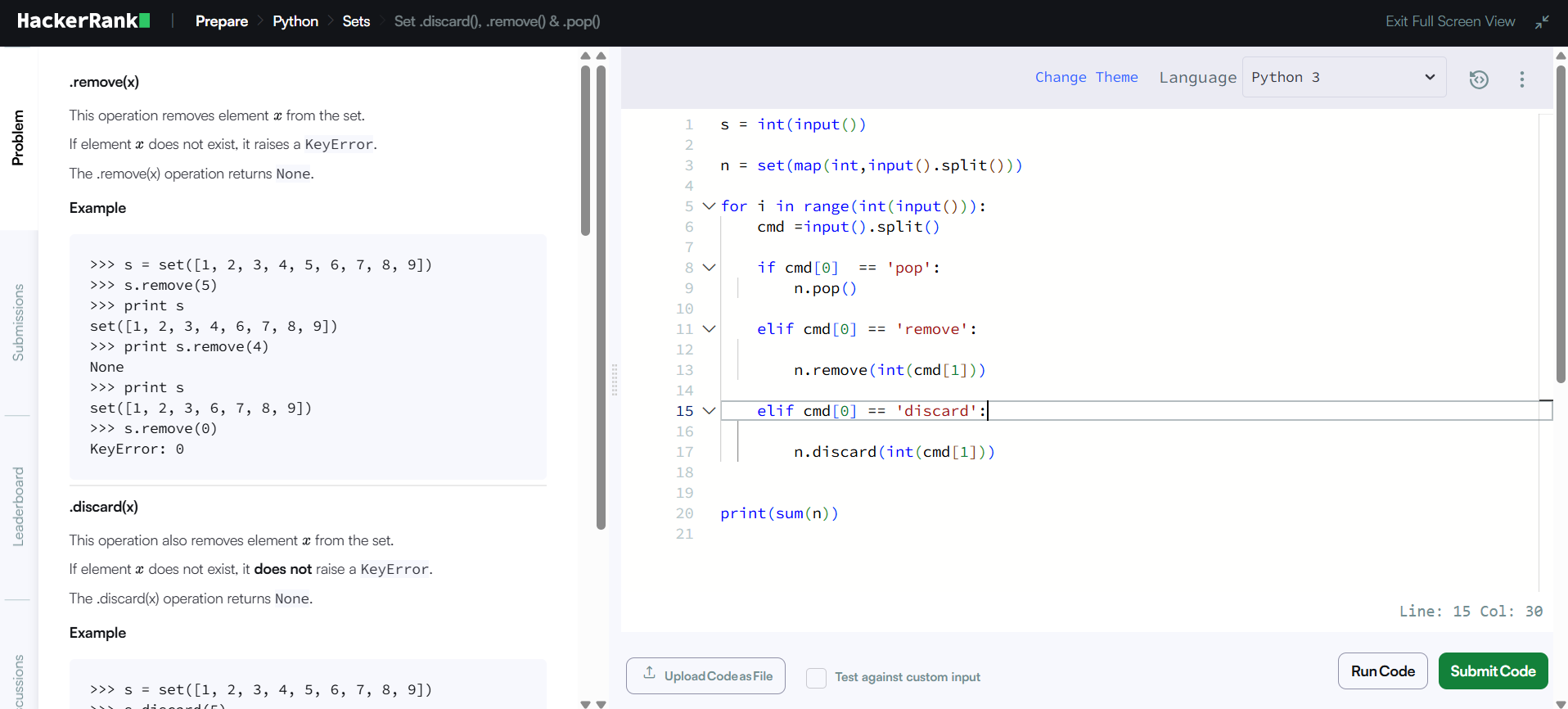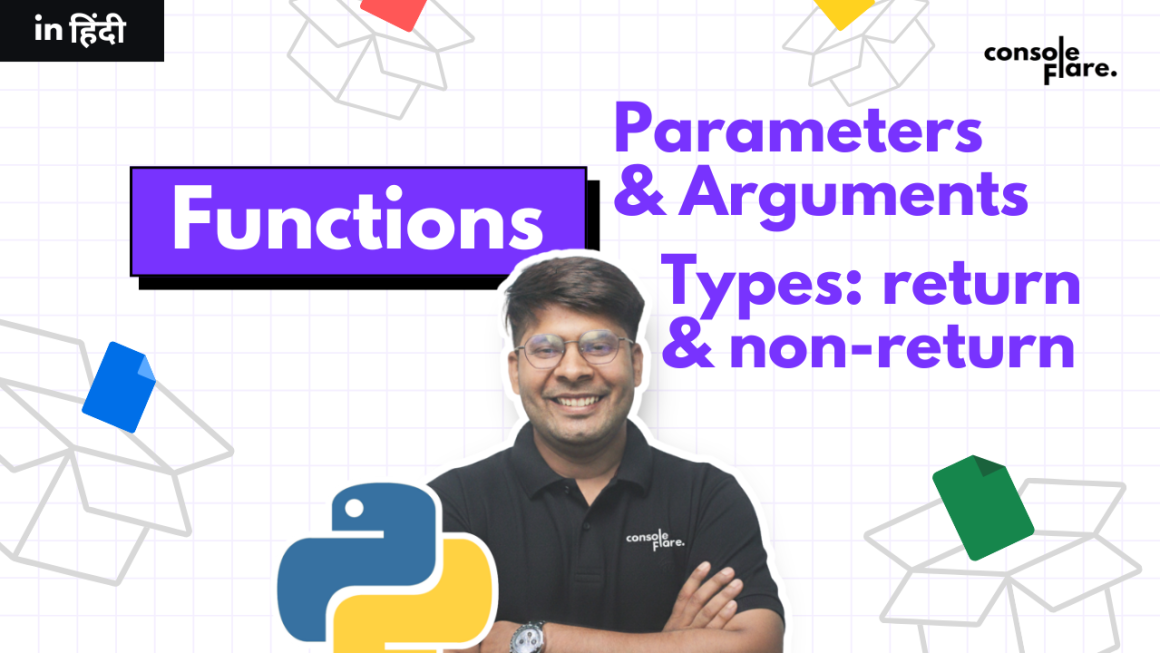HackerRank Python Series: Working Through the Set discard(), remove(), and pop() Challenge
Hi there! Welcome back to our HackerRank Python Series! I’m looking forward to talking about the Set discard(), remove(), and pop() challenge today. I taught Python for a while, and to be honest, sets really confused me at first. They are useful, but they have some strange things about them. I’d like to walk you through this problem step by step, as if we were working on it together in class, until it makes sense to you. Does that sound good? Let’s get started.
What’s This Problem All About?
Okay, so you start with a set of numbers and then use these commands to change them. You have to use those commands and add up the things that are left. It’s a good way to practice with Python sets because they are great for things that are unique – there are no duplicates to worry about. The three main methods are pop(), remove(), and discard(). They all change the set in different ways, so it’s important to know when to choose which one.
Here’s a little table I’d scribble on a whiteboard if we were in class:
| Method | What It Does | Will It Crash If Something’s Missing? |
| pop() | Grabs a random element | Yeah, it’ll error if the set’s empty |
| remove(x) | Deletes a specific element | Yup, fails if it’s not there |
| discard(x) | Deletes a specific element safely | Nope, just moves on |
Each method’s got its own vibe, and we’ll see how they work in the code.
Let’s look at the code.
I’ll go over this step by step, as if we’re writing the code together, so that everything makes sense. Picture us working this out with a notebook nearby and writing down a few notes.
Step 1: Getting the Number of Elements
s = int(input())This part is pretty basic – it asks for the count of numbers we’ll use. The input() takes what you enter as text, and int() changes it to a number.
Step 2: Making the Set
n = set(map(int, input().split()))We’re getting the numbers now. What if you type “1 2 3 2”? The input(). split() breaks it up into pieces, like [‘1’, ‘2’, ‘3’, ‘2’]. Then, map(int, …) changes them into numbers, and set() puts them in a set, getting rid of any that are the same. It turns into {1, 2, 3}. It’s always cool how sets handle duplicates like that. It really helps.
Step 3: Looping Through Commands
for i in range(int(input())):
cmd = input().split()This part uses int(input()) to get the number of commands, which tells us how many loops to do. For each one, cmd = input(). split() takes a command, like “pop” or “discard 5,” and makes a list out of it, like [‘discard’, ‘5’]. It feels like going through a list of things to do one at a time.
Step 4: Using pop()
if cmd[0] == 'pop':
n.pop()To remove a random element, we execute n.pop() when the command is “pop.” You never know which one to pick from a shuffled bunch.
Step 5: Using remove()
elif cmd[0] == 'remove':
n.remove(int(cmd[1]))To focus on a particular number from the command for “remove,” we utilize n.remove(int(cmd[1])). Although it is perfectly accurate, you will encounter a KeyError if that number is not in the set. Before I started looking at what was actually in the set, I used to make a lot of mistakes with that.
Step 6: Using discard()
elif cmd[0] == 'discard':
n.discard(int(cmd[1]))“Discard” is like the relaxed sibling of remove. It tries to delete the number with n.discard(int(cmd[1])), but if it’s not there, it just shrugs and keeps going. I wish I’d leaned on discard() more when I was starting out – it would’ve saved me some frustration.
Step 7: Adding Up the Leftovers
print(sum(n))Lastly, print() shows the sum(n), which adds up all of the remaining items in the set. A straightforward sum of the remaining components is the outcome that HackerRank is aiming for.
The Complete Code All at Once
The complete code is provided here, along with some comments to help with comprehension:
s = int(input())
n = set(map(int, input().split()))
for i in range(int(input())):
cmd = input().split()
if cmd[0] == 'pop':
n.pop()
elif cmd[0] == 'remove':
n.remove(int(cmd[1]))
elif cmd[0] == 'discard':
n.discard(int(cmd[1]))
print(sum(n))Things to Keep in Mind
I’m going to wrap up a class before you leave, so let’s talk about the important things:
• pop(): Removes a random element by grabbing it. It’s fast, but if the set is empty, it will fail.
• remove(x): Aims for a particular element. Works perfectly, but if the element is absent, it fails.
• discard(x): Likewise aims for a particular element, but disregards its absence. My go-to method for avoiding trouble is this.
Quick Tip: Not sure if an element’s in the set? Stick with discard(). It’s like having a backup plan when your code’s acting up.
Wrapping It Up
Good job on finishing the HackerRank Set discard(), remove(), and pop() challenge! We have thoroughly examined how sets work, explained the distinctions between these approaches, and developed a solution that effectively handles the commands.
Sets might seem strange initially – I sure had trouble with them – but you’ve come a long way. This knowledge will be useful for other coding tasks and actual projects, too.
Related Post:
HackerRank Python Solution – Using itertools combinations_with_replacement | In 5 Easy Steps
Incorrect RegeX Challenge on HackerRank: 5-Step Python Regex Validation Tutorial
Python Official Documentation for Sets:
URL: https://docs.python.org/3/library/stdtypes.html#set
For more such content and regular updates, follow us on Facebook, Instagram, LinkedIn
Conclusion:
The fusion of data science in the finance sector is not just a technological evolution but also a fundamental shift in the way the financial industry operates. From predictive analytics to personalized financial services, the applications of data science are reshaping traditional practices and opening up new possibilities. As we all move forward, the synergy between finance and data science will continue to evolve, creating a more robust, efficient, and resilient financial ecosystem. In this data-driven era, those who embrace the power of data science will be at the forefront of innovations and success in the world of finance.
Want to know what else can be done by Data Science?
If you wish to learn more about data science or want to advance your career in the data science field, feel free to join our free workshop on Master’s in Data Science with Power BI, where you will get to know how exactly the data science field works and why companies are ready to pay handsome salaries in this field.
In this workshop, you will get to know each tool and technology from scratch which will make you skillfully eligible for any data science profile.
To join this workshop, register yourself on ConsoleFlare, and we will call you back.
Thinking, Why Console Flare?
Recently, ConsoleFlare has been recognized as one of the Top 10 Most Promising Data Science Training Institutes of 2023.
Console Flare offers the opportunity to learn Data Science in Hindi, just like how you speak daily.
Console Flare believes in the idea of “What to learn and what not to learn,” and this can be seen in their curriculum structure. They have designed their program based on what you need to learn for data science and nothing else.
Want more reasons?
Register yourself on ConsoleFlare, and we will call you back.
Log in or sign up to view
See posts, photos, and more on Facebook.






